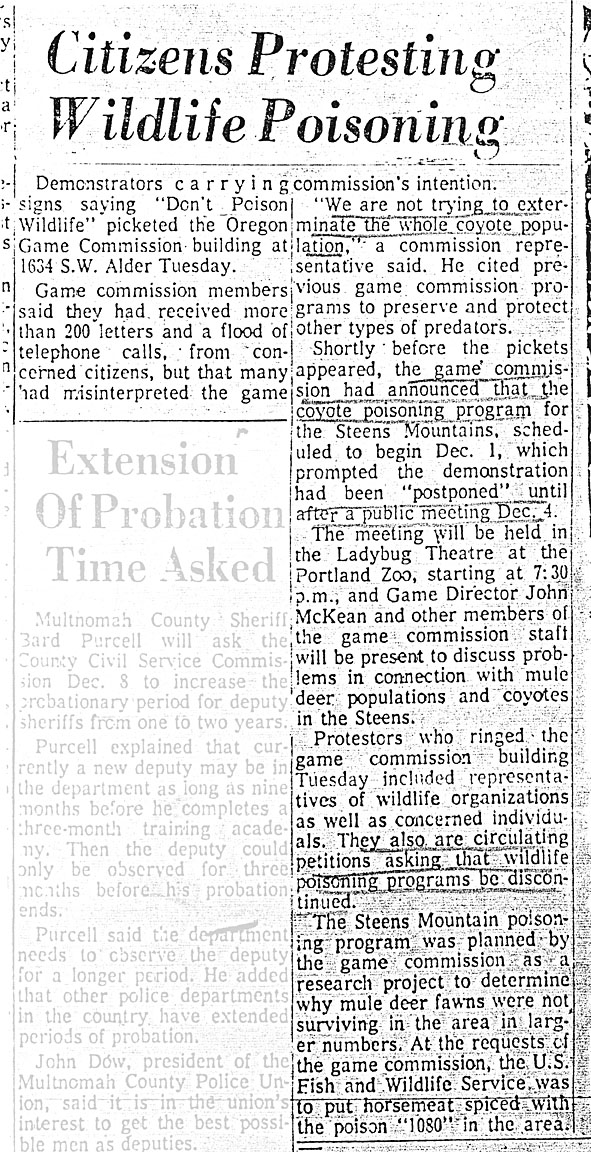- Catalog No. —
- None
- Date —
- November 24, 1970
- Era —
- 1950-1980 (New Economy, Civil Rights, and Environmentalism)
- Themes —
- Environment and Natural Resources, Government, Law, and Politics
- Credits —
- Oregon Historical Society�
- Regions —
- Southeast
- Author —
- Oregon Journal Collection
Citizens Protesting Wildlife Poisoning
The Oregon Journal published this article on November 24, 1970 along with a photograph of protesters picketing the Oregon State Game Commission’s office in Portland. This public protest may be the first time in Oregon’s history when an organized coalition of private citizens advocated for the protection of land-based predators.
During the 1960s, a steep decline in the mule deer population throughout the Great Basin prompted the Oregon Game Commission to begin studying what was happening to one of the region’s most highly sought-after game animals. After deciding to focus their studies in the Steens Mountain region of southeastern Oregon, chosen for its remoteness and relative isolation, the Game Commission began researching reproduction and survival rates of mule deer herds in 1968. By 1970, they determined that more data was needed on the relationships between mule deer and coyotes. Subsequently, the Game Commission requested that the U.S. Fish and Wildlife Service expand their number of poison-laden bait traps placed in the Steens. Prior to the state agency’s request, the Fish and Wildlife Service had already planned to place sixty-three poisoned bait stations throughout the region. The Game Commission asked for an additional nineteen.
In mid-November of 1970, following a seminar on the planned coyote-poisoning program held by the Portland Zoological Society, the Oregon Journal published an article about the Game Commission’s plans. Within weeks, public outcry over the eradication program pressured the Game Commission to delay its plans long enough to conduct a public hearing. When the meeting was held, more than 400 people showed up to voice their opinion of the state’s strategy. Most were highly critical of the plan. Much of the criticism was focused on the use of the poison 1080 used to kill coyotes, since many non-target species were typically killed through its use. The Game Commission responded to the hearing by postponing its plans for the winter. A year later, a group of ten Reed College students were granted $10,000 by the National Science Foundation “to study the extent and effect of coyote predation on mule deer in the Steens Mountain region”—with non-lethal methods.
Further Reading:
Dunlap, Thomas R. Saving America’s Wildlife: Ecology and the American Mind, 1850–1990. Princeton, N.J., 1991.
Written by Joshua Binus, © Oregon Historical Society, 2006.
